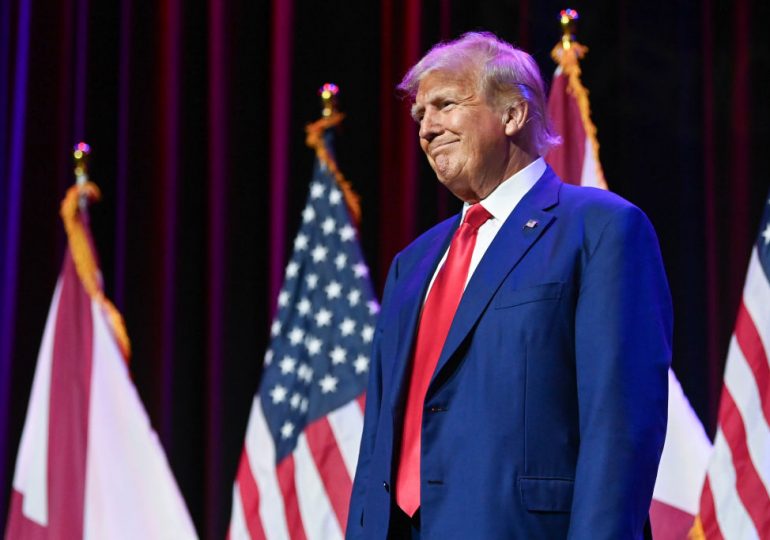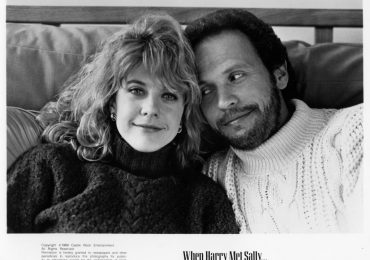The results in the Iowa caucuses and the New Hampshire primary have made it clear that the GOP presidential primary probably will be a coronation for former President Donald Trump. Trump beat his closest rival Nikki Haley by double digits in New Hampshire on Tuesday, despite the state being favorable to her. But while the political world turns its attention to South Carolina, which hosts the next primary, those who want to understand Trump’s dominance should look to where his challengers held their December debate: Tuscaloosa, Ala.
[time-brightcove not-tgx=”true”]
Red states like Alabama rarely receive national political attention because they’re largely non-competitive. A Democrat hasn’t won the state at the presidential level since Jimmy Carter in 1976, and Democrats have won only one Senate race there since 1992, Doug Jones’ special election victory in 2017 under extraordinary circumstances.
But Alabama wasn’t always as predictable. As late as 1984, President Ronald Reagan campaigned in Tuscaloosa. Reagan’s trip provides an indication as to why Trump has proved to be unstoppable in the GOP primary.
In the 1960s, the reign of racist Governor George C. Wallace painted Alabama as a reactionary state. Yet, the state’s politics were more complex. While all of its politicians defended segregation, iconic New Deal Democrats like Senators Lister Hill and John Sparkman had thrived as economic liberals for decades, as they strove to increase opportunities for Alabamians despite supporting segregation to stay in office. Both were advocates for organized labor and supported federal programs like the Tennessee Valley Authority (TVA) to improve the lives of their less affluent constituents.
But things were changing in the 1960s. In 1962, Hill’s re-election to a fifth term in Washington was supposed to be “a coronation.” Instead, “out of nowhere,” came a young veteran named Jim Martin. The upstart challenger had fought for General George Patton during World War II, married a former Miss Alabama, built a fortune from oil distribution, and became, in the words of Alabama political commentator Steve Flowers, “one of the fathers of the modern Republican Party in the South.”
While all candidates advocated for segregation, Martin portrayed himself as a moderate, pro-business politician who favored limited government intervention. For example, he later founded the Forever Wild Land Trust through funds from oil drilling. And unlike others on the right, Martin did not want to completely dismantle the New Deal order erected by figures like Hill. He believed in maintaining government control of public lands, for example, and supported the TVA as well.
Read More: The Surprising Voters Driving Trump to Victory
While Hill had won reelection by 37 points in 1956, Martin gave him a massive scare. The outcome was so close that NBC’s Chet Huntley and David Brinkley reported that Martin had won before the final vote count revealed that the incumbent senator had survived by a 6,000 vote margin.
The tight race exposed a state that was losing its decades-long loyalty to the Democratic Party. The transition would become clearer in the years to come as Barry Goldwater captured the state in 1964 and Richard Nixon won it in 1972. (Wallace won the state in 1968 as a third party candidate.)
Alabama’s turn to the right and the GOP exemplified a shift in the national political landscape that accelerated in the 1970s. White working-class Democrats swung to the right, because the party had shifted from representing economic opportunity for them to being the party of social liberalism, including anti-war activism, busing (a dog whistle for integration), and what they considered to be general cultural decline. Liberals had not fully understood, and also often ignored, the cultural sensibilities of the white working class. Those voters also now believed that, instead of helping them economically, liberals wanted to increase their taxes to benefit less deserving communities in places they felt they couldn’t relate to. This combination of economics and culture pushed what was once a key piece of the New Deal Democratic coalition toward supporting the GOP.
Despite their disillusionment, many of these white working class Democrats voted for Jimmy Carter, a peanut farmer and evangelical Christian from Plains, Ga. Yet, Carter disappointed them by trying to find a middle ground on contentious culture issues like abortion. Carter was a strong supporter of the Equal Rights Amendment and pardoned some Vietnam draft dodgers. Many Americans also associated his presidency with economic woes.
That created an opportunity for figures like Alabama religious zealot Jeremiah Denton, a former Vietnam prisoner of war, who was far to the right of Martin, let alone New Dealers like Hill and Sparkman. In 1977, Denton retired from the military and founded the Coalition for Decency to combat what he saw as the moral degeneracy represented by the sexual revolution, drug use, and modern television. Rather than focus on economic policies that would help struggling Alabamians—as Hill and Sparkman did during the New Deal—Denton called for government spending that would advance his moral agenda, appealing to voters’ conservative social values. For example, Denton argued for and won millions in federal funding to encourage abstinence among teenagers.
American literary legend Hunter S. Thompson later characterized him as “a genuine dingbat who [would] seize almost any opportunity to make a fool of himself.” Yet, Denton capitalized on the failures of Carter, and the newly active “moral majority,” a grassroots movement launched by Rev. Jerry Falwell in 1979 to crusade for conservative Christian values.
Denton ran for the Senate in 1980 and won narrowly, becoming the first Republican senator from Alabama since Reconstruction. The majority of his platform centered around the preservation of the nuclear family and increased military intervention abroad, with the economy deemphasized. His victory illustrated how much the electorate had shifted rightward since Martin put the GOP on the map in Alabama in 1962.
Even so, Alabama still wasn’t a sure thing for Republicans when Ronald Reagan launched his campaign for reelection. In 1980, the president had only won the state by 1.3%, while Denton won by a little over 3%. Leaving nothing to chance, Reagan arrived in Tuscaloosa on Oct. 15, 1984 with Denton by his side. He wanted to use the appearance to appeal to young voters and Southerners.
The president’s speech largely steered away from policy. Instead, the former actor used slogans, one-liners, and cultural references to entertain the crowd. When asked why he came to speak at the university, he responded, “They told me I was invited.” He called Alabama football coach Bear Bryant a “patriotic” American and claimed his “economic policy” was “Roll Tide Roll.”
Read More: Mo Brooks’ Loss Shows Trump’s Grip Remains Strong, at Least in Alabama
After the speech, Reagan stopped at a Northport McDonald’s to eat a hamburger with locals. In a move to show relatability and create a story for the media, the president allegedly took $20 from his Secret Service detail and asked them what to order. He sat between two men and ate a hamburger, while shaking hands with everyone who interrupted him. He then signed a child’s cast and took the fries to go.
For white working class Alabamans, who felt alienated by Democrats, Reagan’s visit to the fast food restaurant sent a message that he could relate to them and understood their lives and values. The McDonald’s visit was so meaningful to locals that after the building was demolished, the owner placed a bust of Reagan in the new restaurant.
Over the next two decades, Alabama became a rock-ribbed Republican state—one that epitomized the new socially conservative GOP that favored government intervention on moral issues, while opposing social programs and favoring low taxes. To the working class white voters who shifted parties, opposition to taxes and social programs protected their hard earned dollars and did not support programs that offended them. But while Republicans won every presidential election in the state between 1984 and 2012, none of the candidates captured Alabama quite like Donald Trump did in 2016.
It was not a coincidence that Trump picked up his second major endorsement in Feb., 2016 from then-Alabama Senator Jeff Sessions at a rally in front of 32,000 people in Madison, Alabama. Surrounded by booths selling his merchandise and fans who were wearing it, Trump had won over the crowd before he set foot on stage. What made Trump so popular in Ala. was his ability to combine the cultural politics wielded by Denton and the showmanship of Reagan. When a plane flew overhead, Trump shouted, “What is that? Oh. Uh oh, it’s ISIS, get them down!”
It’s this combination that has made Trump an almost cult-like figure with Republican base voters—and why he has won the first two primaries, despite facing 91 indictments in four criminal cases. His open disdain for the usual rules of politics has only made him more popular with his base, tapping into and providing an outlet for the frustration among working class white voters that dates back more than a half century.
The political changes in Alabama that began in the 1960s and fueled the rise of politicians like Jeremiah Denton ushered in a new breed of Republicanism, one that Trump has played into with almost unparalleled success, and which will likely win him the GOP nomination and maybe even the presidency.
Ashley Steenson is a PhD student at the University of Alabama and freelance writer.
Made by History takes readers beyond the headlines with articles written and edited by professional historians. Learn more about Made by History at TIME here. Opinions expressed do not necessarily reflect the views of TIME editors.
Leave a comment







